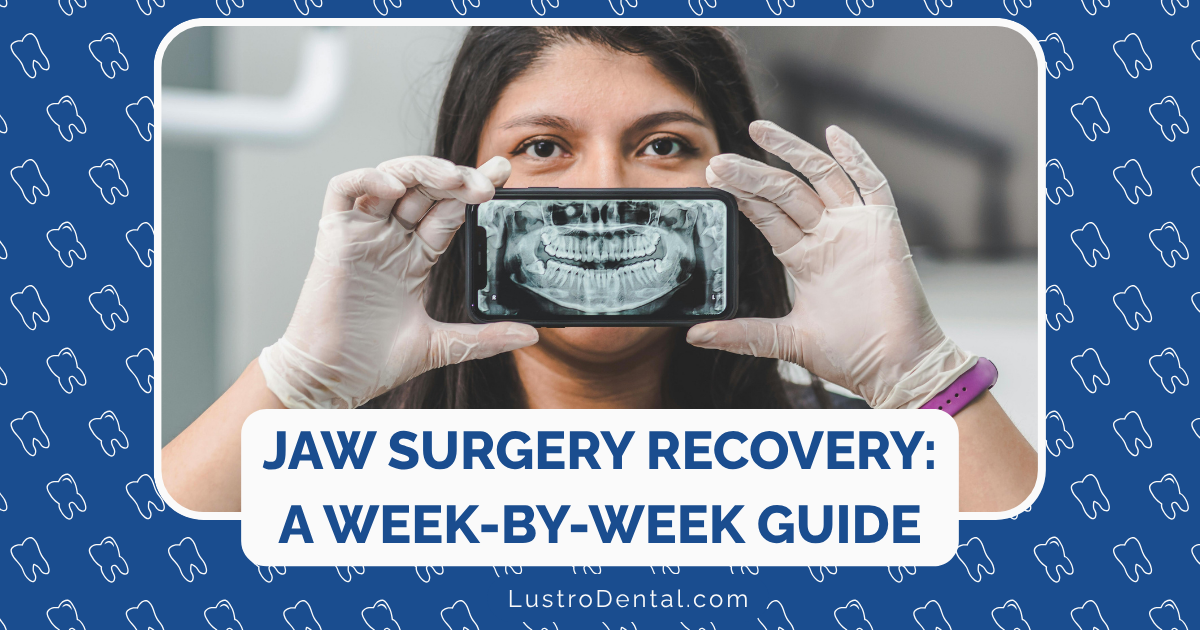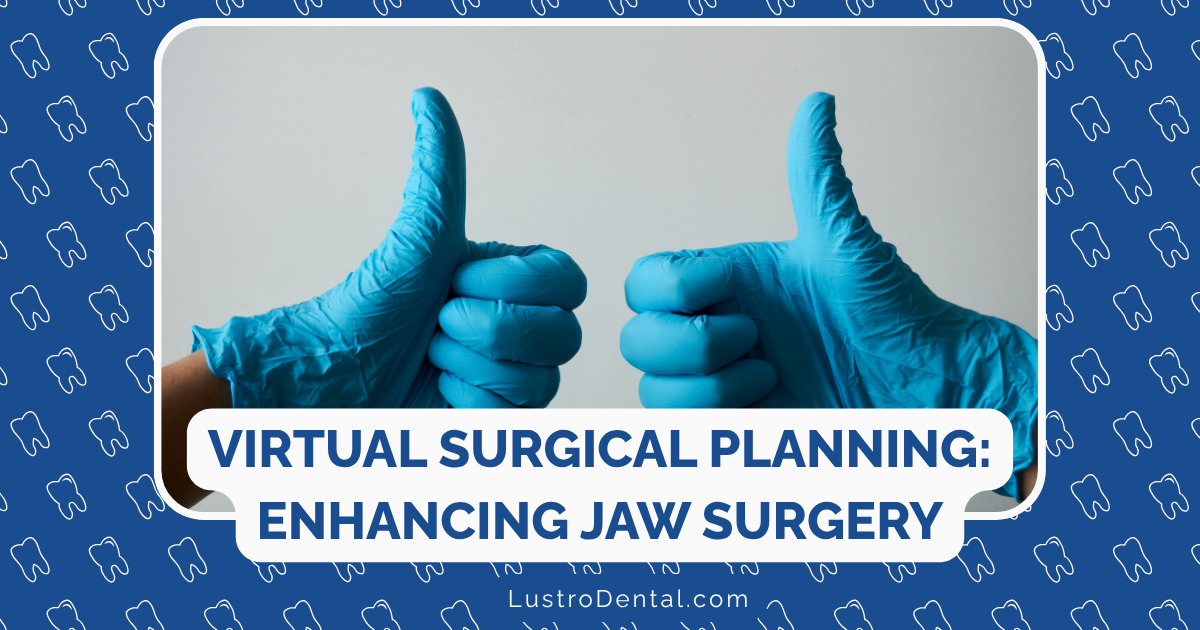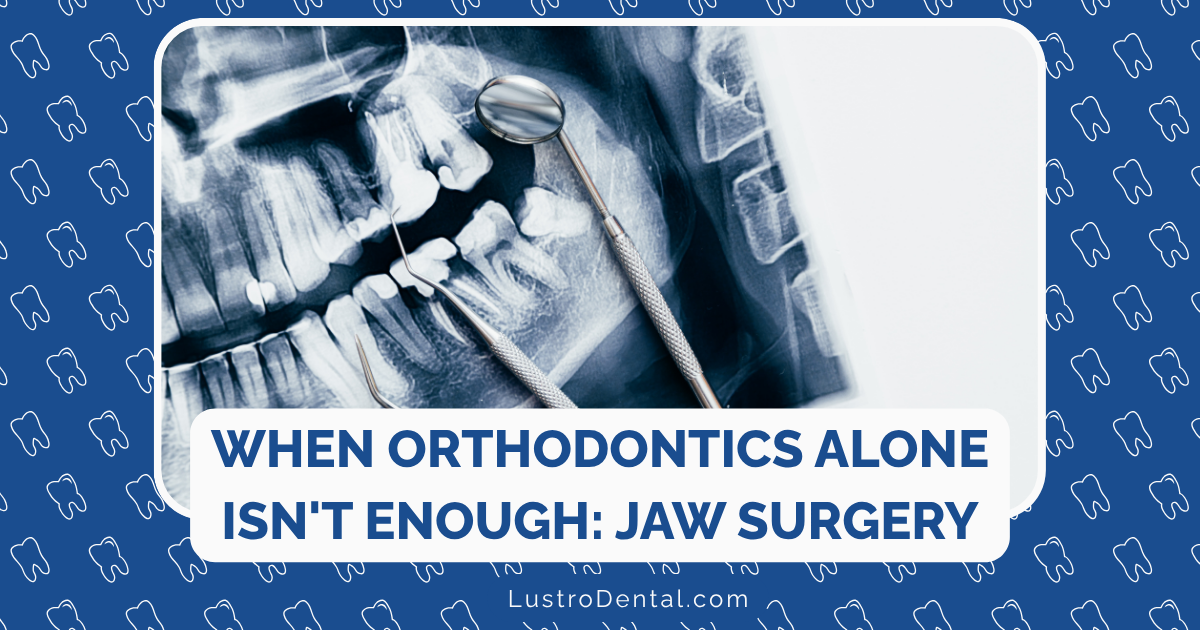Recovery After Jaw Surgery: What to Expect Week by Week

Having guided hundreds of patients through orthognathic surgery recovery, I’ve learned that one of the most common questions is simply: “What will recovery actually be like?” This makes perfect sense—jaw surgery is a significant procedure that impacts how you eat, speak, and look during the healing process.
While everyone’s recovery journey is unique, there are predictable patterns and milestones that most patients experience. This week-by-week guide will help you understand what to expect, from the immediate post-operative days to your return to normal activities. Remember, knowledge is power—and understanding the jaw surgery recovery timeline can help reduce anxiety and set realistic expectations.
Before We Begin: Understanding the Recovery Timeline
Orthognathic surgery recovery happens in phases, with the most challenging period typically being the first two weeks. According to the Mayo Clinic, initial jaw healing takes about six weeks, but complete healing can take up to 12 weeks. During this time, your body is working hard to heal bone, soft tissue, and nerves.
Let’s break down what you can expect during each phase of recovery.
The Hospital Stay (Days 1-2)
Immediately after surgery, you’ll spend 1-2 days in the hospital under medical supervision. This period is crucial for managing initial pain, swelling, and ensuring you can take in adequate fluids.
What to expect:
- Significant facial swelling: This is completely normal and will increase over the first 72 hours
- Difficulty speaking: Your jaw mobility will be limited, and your speech may be affected
- Liquid diet: You’ll begin taking clear liquids through a syringe or cup with a spout
- Pain management: You’ll receive IV pain medication transitioning to oral pain relievers
- Regular check-ins: Your surgical team will monitor your condition closely
Tips for this phase:
- Focus on rest and following medical instructions
- Practice communicating with a notepad or text messages if speaking is difficult
- Begin learning how to take medications and fluids with your new jaw position
Week 1: The Most Challenging Phase
The first week post-discharge is typically the most difficult part of recovery. Days 3-4 are often described as the “peak” days for discomfort as swelling reaches its maximum.
What to expect:
- Peak swelling: Facial swelling typically reaches its maximum around day 3-4
- Significant bruising: May appear on your face and neck, changing from purple to green to yellow over time
- Limited jaw mobility: Opening your mouth will be difficult due to swelling and muscle tightness
- Liquid nutrition: Your diet will consist entirely of liquid foods taken through a syringe or cup with a spout
- Fatigue: Your body is working hard to heal, so you’ll likely feel tired
- Difficulty sleeping: Finding a comfortable position may be challenging
Nutrition focus: During this first week, focus on high-protein, nutrient-dense liquids such as:
- Protein shakes and meal replacement drinks
- Strained soups (no chunks)
- Fruit and vegetable smoothies (strained to remove any pulp)
- Yogurt drinks
- Ensure or Boost nutritional supplements
According to the University of Illinois Hospital, many patients find it easier to eat 6-7 small “meals” throughout the day rather than three larger ones.
Oral hygiene:
- Rinse with diluted hydrogen peroxide and water mixture after liquid meals
- After day 3, begin salt water rinses (1/4 teaspoon salt in 8 oz water)
- No brushing yet—your surgical sites need time to begin healing
Activity level:
- Rest is essential, but short walks around your home can help reduce swelling and prevent complications
- Keep your head elevated at all times, even while sleeping (use 2-3 pillows)
- Avoid bending over or any activity that increases blood pressure to your head
Pain management:
- Take prescribed pain medications as directed
- Apply ice packs to your face (20 minutes on, 20 minutes off) for the first 48-72 hours
- Remember that days 3-4 are typically the worst—things will improve after this point
Week 2: Beginning to See Improvement
By the second week, you’ll start noticing improvements as swelling begins to subside. You’ll also have your first post-operative appointment with your surgeon.
What to expect:
- Decreasing swelling: Facial swelling will begin to reduce, though still noticeable
- Improving energy levels: You’ll likely start feeling less fatigued
- First follow-up appointment: Your surgeon will check your healing progress
- Transition to pureed foods: You may be able to start incorporating very soft, pureed foods
- Suture removal: Any non-dissolving stitches may be removed
Dietary progression: You may be able to advance to pureed or blended foods such as:
- Well-blended soups with soft ingredients
- Pureed fruits and vegetables
- Yogurt (without chunks)
- Pudding and custards
- Mashed potatoes thinned with broth
- Scrambled eggs (very soft)
Oral hygiene improvements:
- Continue salt water rinses after eating
- You may be able to begin very gentle brushing with a baby toothbrush
- Follow your surgeon’s specific instructions for cleaning around surgical sites
Activity level:
- Continue with short walks, gradually increasing duration as energy allows
- Maintain head elevation when resting
- Avoid strenuous activities, heavy lifting, or exercise
Jaw mobility: According to Inland Empire Oral & Maxillofacial Surgeons, by 10 days post-surgery, you should aim to be able to fit one finger between your teeth when opening your mouth. Your surgeon may provide specific exercises to gently improve mobility.
Weeks 3-4: Noticeable Improvement
By the third and fourth weeks, you’ll experience significant improvement in comfort and function. Many patients begin to feel more like themselves during this period.
What to expect:
- Swelling reduced by 50-60%: Your face will look much more normal, though still somewhat swollen
- Improved jaw mobility: Opening your mouth becomes easier
- Transition to soft foods: Your diet can expand to include more soft foods that require minimal chewing
- Return to light activities: Many patients can return to work or school for sedentary roles
- Improving speech: As swelling decreases, speaking becomes clearer
Dietary expansion: You can begin incorporating soft foods that require minimal chewing:
- Pasta cooked very soft
- Flaky fish
- Soft-cooked vegetables
- Ground meats in sauce
- Soft breads without crusts
- Rice well-cooked with sauce
Oral hygiene routine:
- Regular gentle brushing with a soft toothbrush
- Continue salt water rinses after meals
- Your surgeon may recommend special cleaning tools for areas around braces or surgical sites
Activity level:
- Many patients can return to work or school for non-physical jobs
- Begin light physical activity like longer walks
- Continue to avoid contact sports or activities with fall risks
- Driving may be possible if you’re no longer taking narcotic pain medication
Jaw exercises: By the fourth week, your goal should be to open your mouth wide enough to fit two fingers between your teeth. Your surgeon or physical therapist may prescribe specific exercises to improve range of motion.
Emotional well-being: According to a 2024 study published in BMC Anesthesiology, approximately 17% of patients experience some depression and 58% experience anxiety during early recovery. These feelings typically improve as physical recovery progresses, but don’t hesitate to discuss persistent emotional concerns with your healthcare provider.
Weeks 5-6: Functional Recovery
By weeks five and six, most patients have achieved functional recovery, though complete healing is still ongoing.
What to expect:
- Swelling reduced by 75%: Your facial appearance continues to normalize
- Expanded diet: You can eat most soft foods comfortably
- Increased physical activity: You can resume most normal daily activities
- Return to orthodontic treatment: If you had braces, adjustments may resume
- Second follow-up appointment: Your surgeon will evaluate your progress
Dietary progress: Your diet can expand to include:
- Most pasta dishes
- Tender meats cut into small pieces
- Most cooked vegetables
- Soft fruits
- Soft sandwiches
- Rice and grain dishes
Still avoid very hard, crunchy, or chewy foods like raw carrots, nuts, tough meats, and chewy breads.
Activity level:
- Most normal daily activities can be resumed
- Light exercise is usually permitted
- Continue to avoid contact sports
- Check with your surgeon before resuming more strenuous activities
Jaw function: According to Apex Surgical, by 6 weeks, most patients should be able to:
- Open their mouth to fit two to two-and-a-half fingers between their teeth
- Begin working on sideways jaw movements
- Experience significant improvement in speaking and eating
Weeks 7-8: Continued Improvement
During this period, you’ll continue to see improvements in function and appearance.
What to expect:
- Surgical splint removal: If you had a splint, it may be removed during this period
- Further diet expansion: You can begin incorporating more normal foods
- Increased physical activity: Most restrictions are lifted for non-contact activities
- Continued reduction in swelling: Your appearance continues to normalize
Dietary expansion: With the splint removed (if you had one), eating becomes easier. Your diet can include most foods cut into small, manageable pieces, though you should still avoid:
- Very hard foods like nuts and hard candies
- Chewy foods like bagels and tough meats
- Biting directly into foods like apples and corn on the cob
Activity level:
- Most normal activities can be resumed
- Moderate exercise is usually permitted
- Some patients can return to more physically demanding jobs
- Continue to protect your jaw from impacts
Months 3-6: Long-Term Recovery
While the most challenging parts of recovery are behind you by this point, complete healing continues over several months.
What to expect:
- Near-normal facial appearance: Subtle swelling may persist but is usually only noticeable to you
- Improved nerve sensation: Numbness begins to resolve, though this can take up to a year
- Near-normal jaw function: Opening, closing, and chewing continue to improve
- Orthodontic refinement: Continued orthodontic adjustments to perfect your bite
- Regular follow-up appointments: To monitor long-term healing
Nerve recovery: According to clinical studies, nerve sensation typically improves gradually:
- Upper jaw surgery: Numbness in the roof of the mouth, teeth, and gums may take 6-9 months to resolve
- Lower jaw surgery: Numbness in the lower lip, chin, and teeth may take 4-6 months to improve
- Some patients may have small areas of permanent numbness, but this rarely affects function
Final orthodontic work: If you had braces before surgery, this period typically involves:
- Fine-tuning your bite alignment
- Preparing for eventual braces removal
- Planning for retainer use
The Emotional Journey of Recovery
The physical aspects of recovery are just one part of the journey. Many patients experience a range of emotions during the healing process:
Week 1-2: Adjustment Phase
- Feelings of regret or “buyer’s remorse” are common during the most difficult days
- Anxiety about appearance due to swelling
- Frustration with dietary limitations and communication difficulties
- Concern about whether the results will be worth the discomfort
Weeks 3-6: Transition Phase
- Increasing optimism as swelling decreases
- Excitement about visible improvements
- Continued frustration with remaining limitations
- Impatience for complete recovery
Months 2+: Acceptance Phase
- Appreciation of functional improvements
- Adaptation to new facial appearance
- Increased confidence
- Satisfaction with decision to undergo surgery
A 2021 study published in the Journal of Oral and Maxillofacial Surgery Sciences found that patients reported high satisfaction levels both short-term (one month) and long-term (nine months) after surgery, with significant improvements in appearance-related distress and quality of life.
Tips for a Smooth Recovery
Based on experience with hundreds of patients, here are my top recommendations for the most comfortable recovery:
Nutrition
- Prepare in advance: Stock up on liquid and soft food options before surgery
- Focus on protein: Healing requires protein—aim for at least 60-80g daily
- Stay hydrated: Drink at least 2-2.5 quarts of fluid daily
- Take supplements: A liquid multivitamin can help ensure adequate nutrition
- Track calories: Many patients unintentionally under-eat; aim for at least 1,500 calories daily
Comfort
- Sleep setup: Arrange pillows to keep your head elevated at a 30-45 degree angle
- Ice rotation: Prepare several ice packs so you can rotate them
- Humidifier: Helps with nasal congestion and dry mouth
- Lip balm: Prevents cracking from mouth breathing
- Clothing: Choose front-button tops for easy changing without pulling over your head
Mental well-being
- Set realistic expectations: Recovery is a marathon, not a sprint
- Document your journey: Take weekly photos to see your progress
- Connect with others: Online support groups can provide encouragement
- Plan distractions: Prepare books, shows, and gentle activities
- Communicate needs: Use a whiteboard or text messages if speaking is difficult
When to Contact Your Surgeon
While discomfort is expected during recovery, certain symptoms warrant immediate medical attention:
- Fever over 101°F (38.3°C)
- Excessive bleeding that doesn’t stop with pressure
- Severe pain not controlled by prescribed medication
- Significant increase in swelling after day 4
- Difficulty breathing
- Signs of infection (increased redness, warmth, pus)
- Sudden changes in bite alignment
- Persistent nausea or vomiting
Final Thoughts
Jaw surgery recovery is undoubtedly challenging, particularly during the first two weeks. However, the vast majority of patients report that the temporary discomfort is worth the long-term improvements in function, appearance, and quality of life.
Remember that recovery is not linear—you’ll have good days and more difficult days. Be patient with yourself and celebrate each milestone, no matter how small. With proper preparation, support, and care, you’ll navigate this journey successfully and emerge with results that can truly be life-changing.
Have you undergone jaw surgery or are you preparing for it? Share your experiences in the comments below.







